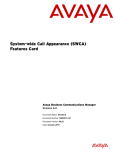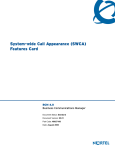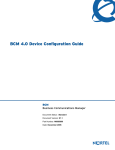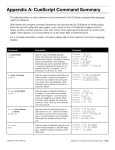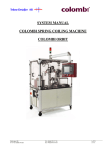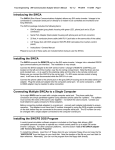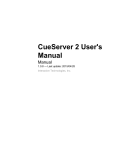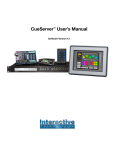Download Avaya System-wide Call Appearance (SWCA) User's Manual
Transcript
Business Communications Manager System-wide Call Appearance (SWCA) Features Card © 2006 Nortel Networks N0004972 02.01 About System-wide Call Appearance (SWCA) keys The System-wide Call Appearance (SWCA) feature allows you to park incoming and outgoing calls on your system so the call is available to other telephones in the system. Using this feature frees the line used by the call. Note: Your telephone must have a free Intercom key to pick up SWCA calls. SWCA assignments can be programmed onto buttons with indicators or as non-appearance assignments on telephones that do not have buttons or where the indicator buttons are already assigned to other features. Indicate the label for your SWCA buttons Identifying SWCA buttons Line 1 Telephone key # SWCA code FEATURE *521 Line 2 FEATURE *522 SWCA1 SWCA4 SWCA2 SWCA5 SWCA3 SWCA6 FEATURE *523 FEATURE *524 FEATURE *525 FEATURE *526 FEATURE *527 Intercom Intercom FEATURE *528 FEATURE *529 FEATURE *530 If possible, assign the same set of buttons to the same SWCA user codes for all telephones in the call group. You can name the keys anything, but it helps to have some reference to the SWCA code. If you need to find out which code has been assigned to a button, use Button Inquiry (FEATURE *0). FEATURE *531 FEATURE *532 FEATURE *533 FEATURE *534 FEATURE *535 FEATURE *536 Adding SWCA assignments to your telephone SWCA codes can be assigned by your system administrator. Also, you can assign these codes on memory buttons at your telephone: 1 Enter FEATURE *3 2 Select a memory button with an indicator Page 2 3 Enter a SWCA code (FEATURE *521 to *536) Non-visible SWCA assignments Non-visible SWCA assignments are configured by your system administrator to each telephone. If your telephone has SWCA assignments that do not appear on buttons, your system administrator will advise you about which codes are assigned to your telephone. This will occur if you are using a 7000 or 7100 digital phone or if your telephone memory buttons are all assigned to other features. Unassigned SWCA calls It is not necessary to have SWCA codes assigned to your telephone to park or unpark a SWCA call. You can park or retrieve a call to or from any SWCA position by entering the relevant SWCA code (FEATURE *521 to *536). Use one of the following features to inform your colleagues where the call is parked: page (FEATURE 60), voice call (FEATURE 66), or messaging (FEATURE 1). Managing calls using SWCA keys Receiving a call and assigning it to a SWCA key Your system administrator will tell you how your system works: The system may be programmed in one of the following ways: 1 An incoming call automatically assigns to a free SWCA assignment when the call is answered. To park the call, press the SWCA key a second time or enter the SWCA code. 2 You press an available SWCA key or enter an available SWCA code to park the call to that key. 3 When you press HOLD, the call parks on an available SWCA assignment assigned to your telephone. Answering a second call: The original call is automatically parked on an available SWCA code. For this instance to occur, your system must be set for Full Autohold (FEATURE 73). Page 3 Using FEATURE *520 to park a call: While the call is active, enter FEATURE *520 to search for the next available SWCA code. Note that this feature only searches SWCA assignments that are assigned to your telephone. • If the system finds an available code, the call is associated with the code. Press HOLD, the assigned SWCA button, or enter the SWCA code to park the call. • If no code is available, the call remains active on your line only. Put the call on Hold until a SWCA assignment becomes available. • If the call was already associated with a SWCA code (for the life of the call), the call is reparked on that code. Incoming call assigns to SWCA Line 1 Line 2 SWCA1 SWCA4 SWCA2 SWCA5 SWCA3 SWCA6 Intercom Intercom In this example, the call comes in on line 1 and automatically transfers to SWCA1 (the first free SWCA key). The solid indicator beside SWCA1 and beside the line key indicates that the call is active on this telephone and it has not yet been parked. On all other telephones in the group, the indicator would be solid only beside SWCA1. The line keys for the other telephones would be free to receive additional calls. If you press SWCA1 again to park the call, the line indicator disappears and the indicator beside SWCA1 starts blinking on all telephones in the group, indicating that the call is available to be picked up. Using Hold with SWCA keys If a call does not automatically park on a SWCA key when you press Hold, it means the call is parked only on your telephone on the line it came in on. To make the call available to the group, you need to unhold the call (press HOLD), then press an available SWCA button or enter an available SWCA code. The call is parked on that SWCA code and the line the call came in on becomes free. When Invoke SWCA parking by HOLD is set to YES, any call put on hold will automatically be parked to SWCA. This includes calls automatically put Page 4 on hold while invoking F986 to transfer a call to voicemail, or other features like conference etc. To disable this feature set Invoke SWCA parking by HOLD to NO. Temporarily-parked calls Your system can be configured so that calls parked on SWCA buttons release the SWCA button once someone picks up the call. In this case, if the person who answered the call wants to repark the call, they must use one of the manual methods described above to repark the call. The system can be configured to retain the call on the same SWCA button for the life of the call, which is the period until the far end hangs up. No available SWCA assignments on your telephone If all your SWCA assignments have parked calls, and you receive another call, you can: 1 put the call on Hold until a SWCA button becomes available. Do this by simply picking up the call. The first call will automatically go on Hold at your telephone. 2 dial in a SWCA code that is not assigned to your telephone. If you assign a call to a code that does not have an appearance on your telephone, use Page, Voice call, or Message to notify the group or another person that there is a call waiting, and on which code it was parked Retrieving a call from a SWCA button If the indicator beside a SWCA button is blinking, you can retrieve the call by picking up the handset and pressing the SWCA button associated with the indicator, or by dialing in the SWCA code that associates with that button. Page 5 Line 1 Line 2 SWCA1 SWCA4 SWCA2 SWCA5 SWCA3 SWCA6 In this example, the call parked on SWCA1 was retrieved by this user, who pressed the SWCA1 button. The flashing indicator beside SWCA1 becomes solid. As well, a solid indicator appears beside one of the intercom buttons. On all other telephones in the group, the indicator displays solid beside SWCA1, indicating that the call has been retrieved and is active. Intercom Intercom If you are not sure which call to pick up, or if your SWCA assignments are not assigned to buttons, you can use one of the following codes to find the longest-parked call or the most recently-parked call: 1 FEATURE *537 retrieves the oldest parked SWCA call. The indicator on all telephones in the group becomes solid, indicating an active call. 2 FEATURE *538 retrieves the most recent SWCA call. The indicator on all telephones in the group becomes solid, indicating an active call. Note: These codes only search across the range of codes that are assigned to a telephone. Other features that affect how you use SWCA Timed out SWCA calls If a call remains parked and unanswered on a SWCA assignment for a preset period of time (the Call Park timeout time), the call unparks from the SWCA code and rings again at the telephone from which it was last parked. Outbound calls You can also park out-dialed calls on a SWCA assignment. If your system is set up to automatically assign calls to a SWCA assignment, the call assigns to a SWCA assignment as soon as it is answered. Otherwise, during your call, you can press an available SWCA button, the Hold button, or enter a SWCA code to park the call. This makes the call available to other users in the group and it frees up your intercom or line. Page 6 Auto Hold FEATURE 73 Your telephone must be set to have Full Auto-Hold so that a call automatically gets placed on HOLD if you answer a second call. If your telephone does not have Auto Hold on, use FEATURE 73 to change the setting. Note that to turn Full Autohold off, enter FEATURE 73 again. Transferring calls FEATURE 70 If you transfer a call to a telephone that does not have the same SWCA keys assigned, the call disappears from the SWCA key on your telephone when the call transfers. If the call needs to be reassigned to your group, the person who answered the call enters a SWCA control code that is assigned to your group. Doing so returns the call to a SWCA designation at your telephone. Conference calls FEATURE 3 You cannot park a conference call on a SWCA key. You cannot conference a call that is parked on a SWCA key. To conference a call parked on a SWCA key: Press the SWCA key to unpark the call. Press Hold. Press to create the conference. If a conference call is created using two SWCA-associated calls on a set and a conference transfer occurs between the two dependent sets because the conference master set releases the call, then the single remaining call between the two dependent sets continues to be associated to the currently associated SWCA key (if any) on each dependent set. If a conference call is created from two SWCA-associated external calls, and then a transfer occurs by the conference master releasing the call, the remaining call between the lines or trunks is not associated with any SWCA key. Page 7







